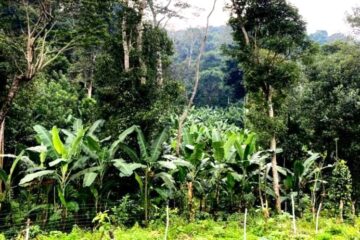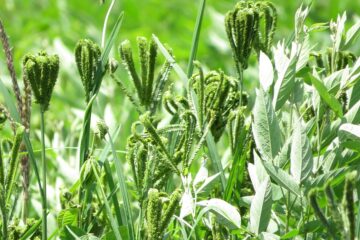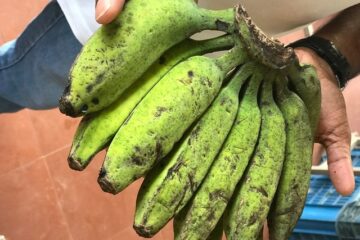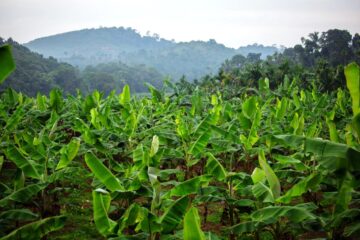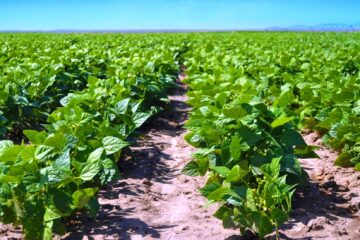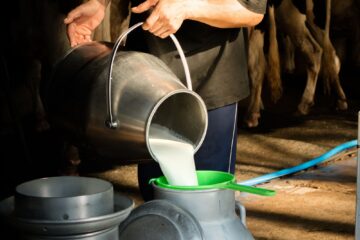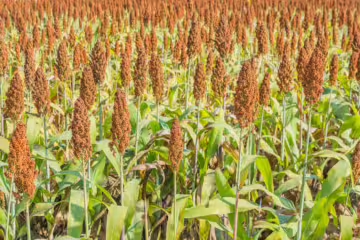Known as “Black Gold,” pepper holds a unique place among aromatic crops. It has been used as a premium spice in India, particularly in South India, for centuries. Due to its strong aroma, pepper is called the “King of Spices.”
Pepper is mainly cultivated as an intercrop in coffee plantations in the Western Ghats regions of Kerala, Karnataka, and Tamil Nadu. In Tamil Nadu, it is grown extensively in areas like Lower Palani Hills, Shevaroy Hills, Nilgiris, Sirumalai, Kolli Hills, Kalvarayan Hills, and Meghamalai.
In recent years, pepper cultivation has expanded beyond hill areas to plain regions, especially in coconut groves. In plains, trees like coconut, moringa, or silk cotton can serve as support for pepper vines.
Climate
Pepper thrives in moderate temperatures, ideally between 10°C to 40°C, with 20-22°C being optimal. It requires 150-250 cm of rainfall annually and grows best in hill areas at elevations of 400-1,500 meters above sea level.
Soil
Pepper prefers well-drained loamy soils rich in organic matter. The soil should be at least 40 cm deep, with a pH range between 5.5 and 7.0.
Varieties
Different varieties are suited for different regions. For plain areas, varieties such as Panniyur-1, Karimunda, and Kottanadan are well-suited.
Propagation
Preparation of Cuttings: Select healthy, high-yielding mother vines with vigorous growth. Vines that grow along the ground are ideal for cuttings. The best time for propagation is between February and March. Mix well-decomposed organic manure with sand, and add bio-control agents like Pseudomonas fluorescens and Trichoderma viride to prevent root rot.
Soak the base of the cuttings in a solution of 1 gram IBA (Indole Butyric Acid) per liter of water for 45 minutes to stimulate root growth. Plant the treated cuttings in polybags, ensuring at least one node is buried in the soil. Maintain the cuttings in a mist chamber or under moderate shade, and they will start sprouting new shoots within a month. The rooted cuttings can be transplanted during the southwest or northeast monsoon.
Planting Method
Pepper can be planted in both plains and slopes. North and northeastern slopes are ideal for protecting young pepper vines from harsh sunlight. Dig pits of 30 cm in length, width, and depth, keeping them 30 cm away from the support tree. Fill the pits with 10 kg of compost and topsoil, and let them rest for 15 days before planting.
For disease control, mix 10 grams each of Pseudomonas and Trichoderma with compost. Plant two pepper vines per pit, leaning them toward the support tree, and ensure proper staking. Provide shade for young plants by placing branches around them, and weed the area 2-3 times a year.
Fertilization
Apply fertilizers evenly in April-May and August-September. For three-year-old pepper vines, apply 10 kg of organic manure, 150 g of nitrogen, 50 g of phosphorus, 150 g of potassium, and 25 g of magnesium sulfate. Every two years, add 500 g of lime around each vine to adjust soil pH and promote healthy growth.
Growth Stimulants
Since pepper pollination occurs through water, spray the vines with water 40 days after flowering. After 10 days, mix 4 ml of Planofix with 4.5 liters of water and spray to improve fruit set.
Pest and Disease Management
Root Rot Disease: This disease is common in nurseries and is caused by excess moisture and cold conditions. Control it by spraying 1% Bordeaux mixture or 0.1% Metalaxyl solution.
Pollu Beetle: This pest can cause up to 30-40% yield loss. Its larvae damage tender shoots, fruits, and leaves. To control it, stir the soil around the vines and apply 10% Carbaryl dust.
Sudden Wilt Disease: This disease affects young and mature vines, particularly during the monsoon. Control it by planting healthy cuttings treated with 0.25% Copper Oxychloride. Infected vines should be removed and the soil treated with 1% Bordeaux mixture.
Yellow Wilt Disease: This disease causes leaves to turn yellow and fall off, typically after the monsoon. Control it by applying 30 g of Borate powder per vine in May-June and August-September. Incorporating 5 kg of neem cake into the soil also helps.
Harvesting
Pepper vines begin bearing fruit after 2.5-3 years, with full production achieved after six years. The fruiting process takes 6-8 months, with harvesting occurring in November-January in plains and January-March in hill regions.
When a few berries on the spike turn from green to orange or light purple, it’s time to harvest. Gently cut the spikes and collect the berries. From 100 kg of green berries, you can obtain 33-37 kg of black pepper. Fully ripened berries can also be used to make pickles.
White Pepper Production
For white pepper, harvest the berries once fully ripened and turned red. Soak the berries in water for 7-10 days, cover them with cloth to promote fermentation, and then rub off the skin. Wash the seeds thoroughly to remove any remnants of the skin and dry them in the sun.
Storage
Store dried pepper in clean jute bags or containers with lids to retain its moisture. Re-dry the pepper in the sun if needed to prevent pest attacks.
Dr. R. Jayavalli, Dr. J. Suresh, Dr. R. Arul Mozhiyan, Horticultural College and Research Institute, Tiruchirappalli.




